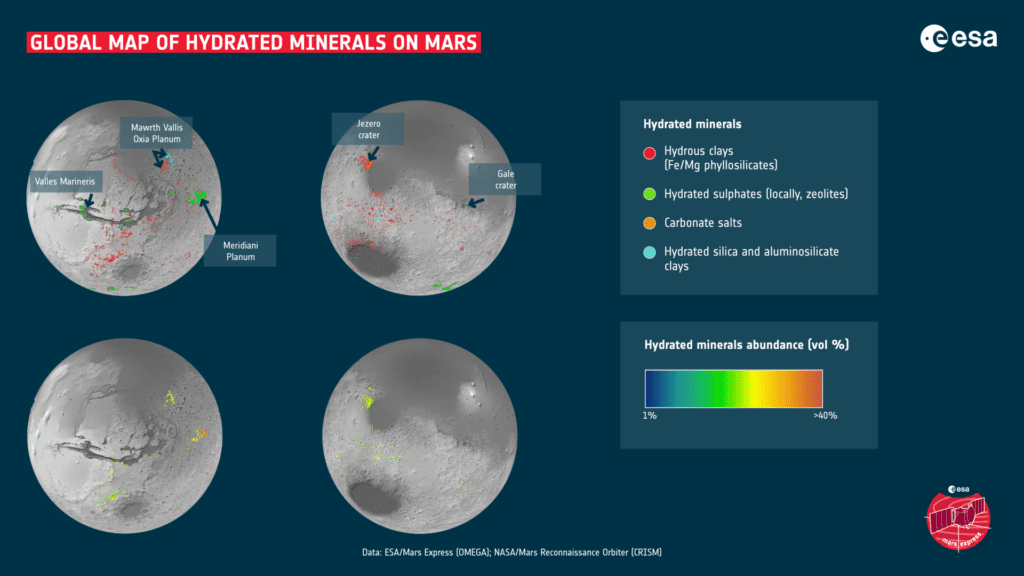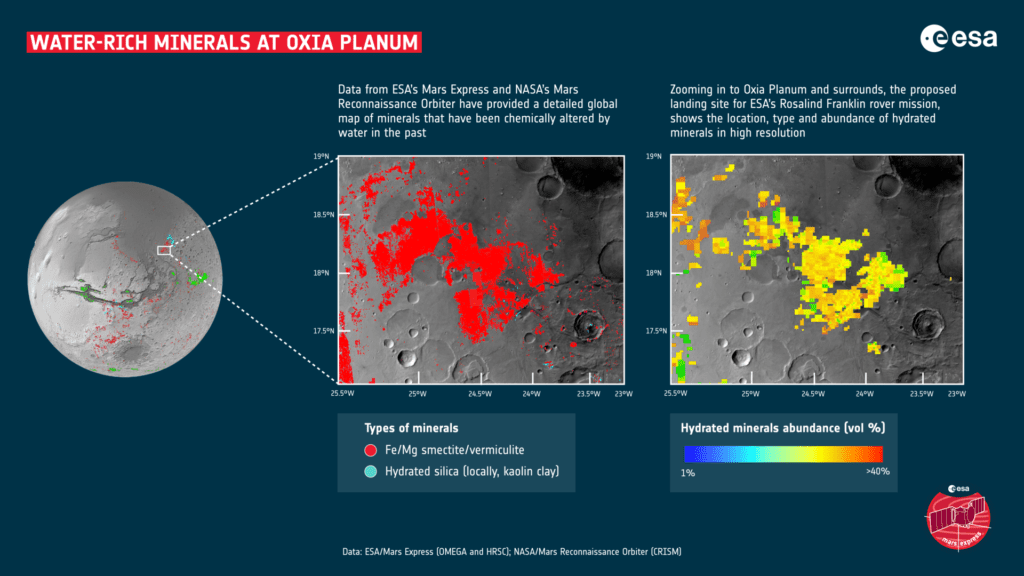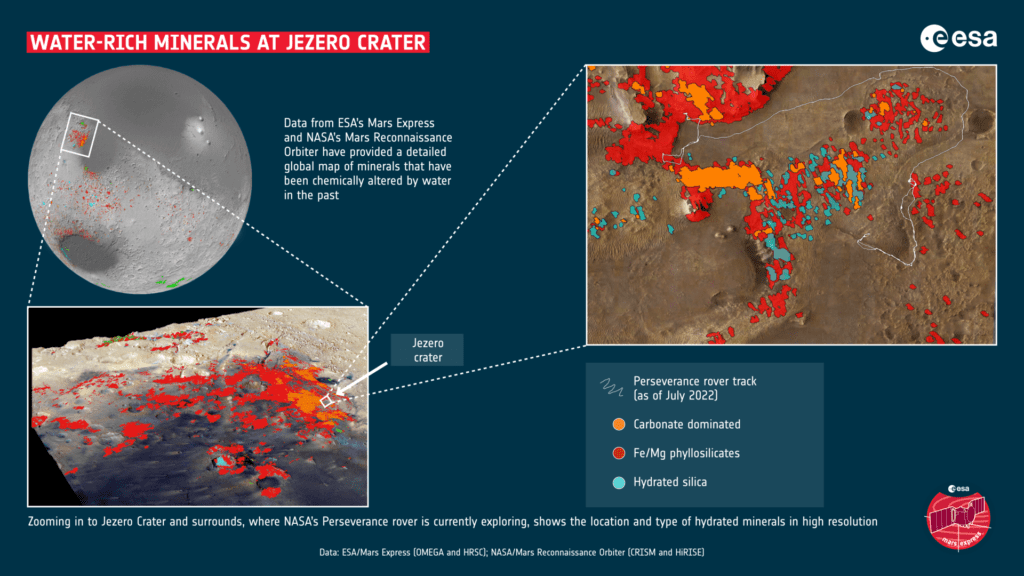A decade’s worth of data has been used to create the most detailed and up-to-date map of the mineral deposits across Mars’ surface.

Mars’ history, and the role water plays in it, have always been somewhat unclear. But new research comes to show that even what we assumed we knew may not, in fact, be true.
The map was created using data from ESA’s Mars Express Observatoire pour la Minéralogie, l’Eau, les Glaces et l’Activité (OMEGA) instrument and NASA’s Mars Reconnaissance Orbiter’s Compact Reconnaissance Imaging Spectrometer for Mars (CRISM). One of its most important features is that it shows the location and abundance of aqueous mineral deposits on the planet. Aqueous minerals typically consist of salts or clays and are formed through the action of water — in other words, the location and nature of these deposits can tell us a lot about the history of Mars‘ liquid water.
Flow with the times
“This work has now established that when you are studying the ancient terrains in detail, not seeing these minerals is actually the oddity,” says John Carter, Assistant Astronomer at the Institut d’Astrophysique Spatiale (IAS) and Laboratoire d’Astrophysique de Marseille (LAM), France, and lead author of the paper describing the findings.
On Earth, clays form when water interacts with preexisting rocks. Different types of clay form based on the mineral composition of these rocks, and on the environmental conditions where the interaction takes place. Two types in particular, smectite and vermiculite, form when only small quantities of water react with a base of volcanic rock; due to the limited amount of water involved, the clays retain mainly the same chemical compounds as the rock they derive from. As such, both smectite and vermiculite are characterized by high levels of iron and magnesium.
However, when more water goes into the reaction, the initial volcanic rock can be altered to a much higher degree. Soluble elements are drained away, which leads to the creation of aluminum-rich minerals such as kaolin clay.
So, judging by the disposition of these clays and salt deposits, researchers can map the history of liquid water on the surface of Mars.

One of the most surprising elements highlighted by the finished map was just how prevalent these minerals seem to be across the face of the planet. While these were considered to mostly be geological oddities, the current map reveals that they are far from such. Previously known only in around 1000 outcrops on Mars, the map shows that there are upwards of hundreds of thousands of such areas strewn all over Mars. A large number of these deposits are found on some of the oldest areas of the planet’s surface.
These findings rewrite our current assumptions regarding Mars’ lost water. The previous train of thought was that, since aqueous minerals are rare on the Martian surface, it was likely that the planet only harbored limited amounts of the liquid and for a relatively short period of time. The main hypothesis was that the limited amounts of clay on Mars were formed during this short window of time before water gradually dried up across the planet. Its deposit of salts formed during this drying period.
Faced with the current data, it is obvious and beyond a shadow of a doubt that water had a central role to play in shaping Martian geology. The only question remaining now is whether this greater quantity of water had a constant, long-term presence, or if it was only found on Mars’ surface for shorter periods of time.

While it’s probable that many of the salt deposits on Mars were formed after the clays, the map suggests that there were many exceptions to this rule and that the two types of minerals often formed and mixed together.
“I think we have collectively oversimplified Mars,” Carter concludes.
“The evolution from lots of water to no water is not as clear cut as we thought, the water didn’t just stop overnight. We see a huge diversity of geological contexts, so that no one process or simple timeline can explain the evolution of the mineralogy of Mars. That’s the first result of our study. The second is that if you exclude life processes on Earth, Mars exhibits a diversity of mineralogy in geological settings just as Earth does.”
The paper “A Mars Orbital Catalog of Aqueous Alteration Signatures (MOCAAS)” has been published in the journal Icarus.









